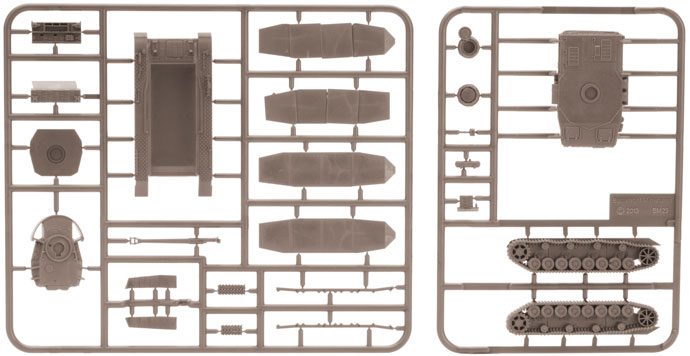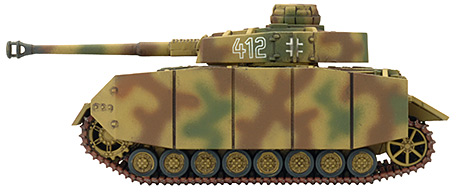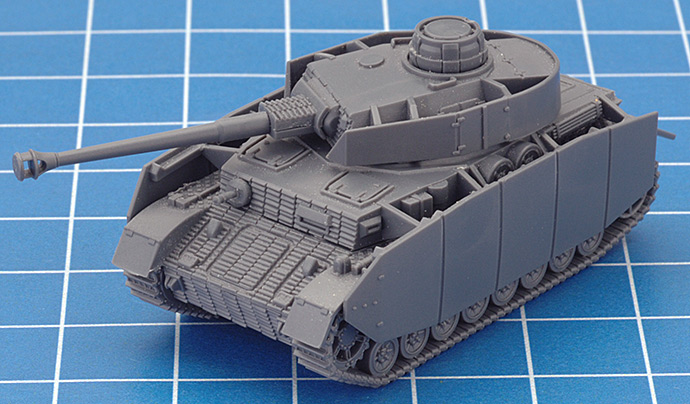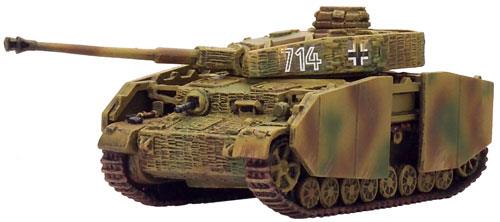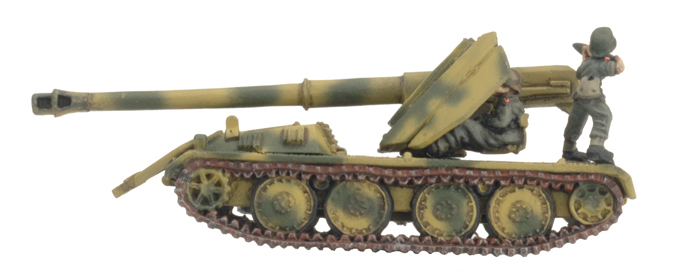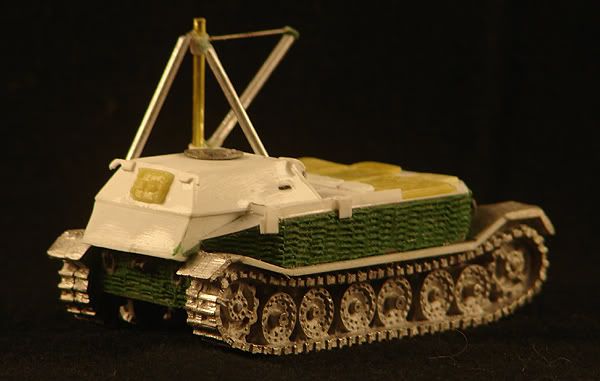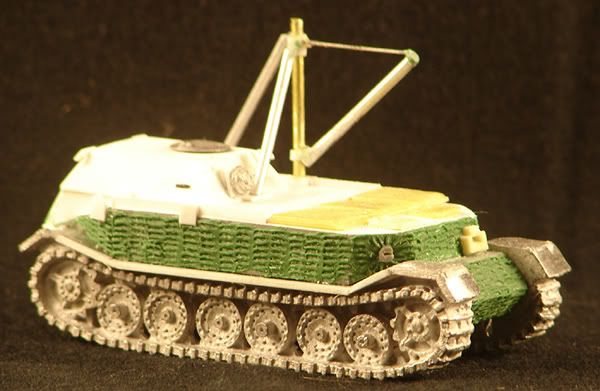With a mini-host of Panzer IV Ausf H needed for the new army, and given the fact that I had a spare lying around from my aforementioned Panzer IV/70 (A) project, I decided to go ahead and build up one of the all plastic tanks from the Panzer IV H Platoon (GBX79). The original release of this miniature was a bit of a fiasco. Not only did it retain the mistake on the idler from the Ausf J plastic parts sprue, detailed in my earlier blog, but it had the wrong number of Schürtzen plates as well. As an interim measure Battlefront provided free copies of the old Panzer IV H Schürtzen (GSO186), but they ultimately had to go back and rework the tooling for this one as the errors were so bad. Fortunately they also cleaned up the idler in the process (now if they’d just go back and fix the Ausf J as well).
Above is a sprue from the original run - you can see the issues with the Schürtzen and idler. A painted copy is below, which shows how far the error went before it was caught when it was released into the wild.
Fortunately Battlefront improved the kit... drastically. It now has the correct number of Schürtzen and the idler is correct as well. The only nit I can pick with the suspension is that all of the wheels are oriented the same way, not as big on the Panzer IV, but they do the same thing on the Stug III, and it looks a bit odd as you never see a real vehicle with it's wheels lined up perfectly.
As pretty much every Panzer IV Ausf H had zimmerit, the plastic version has it molded in. The only drawback here is that the zimmerit looks a bit heavy and blocky to my taste. Compare the plastic version:
To the earlier resin version (GE046):
The zimmerit is much finer on the resin version. That being said, there are a lot of drawbacks to the old resin version. Installing the Schürtzen was always a royal pain in the butt. The turret Schürtzen were molded to the turret, generally with very thick hunks of resin along the bottom of the turret (I generally drilled mine out - which was also a pain in the butt). The tracks aren't nearly as nice either, though the road-wheels are molded as single cylinders rather than two wheels in parallel (if you put the Schürtzen on, you'll never see that part, though). The hull machine gun is a bit better on the old resin version, but the new one isn't bad.
All that being said, the new kit has two big advantages: 1) it's plastic and 2) the FIT. I'll start with the second one first. I continue to be impressed with the fit of the new Battlefront plastics. The Panzer IV breaks down logically into sub-assemblies, and the fit is outstanding across the board. Very little filling and puttying is needed (and that's only if you suffer from AMS - Advanced Modeler's Syndrome). The turret bottom plate can use some putty up front, and the two halves of the gun recuperator have a bit of a seam. Rare earth magnets fit easily in the top hull and the turret bottom to create a very good join between the two.
The second advantage is it is plastic. Conversions and modifications that are extremely challenging in resin and white metal see their degree of difficulty drop considerably in plastic. I'm honestly not making major changes to my Panzer IV's (other than adding some stowage and what not). The only thing I'm doing is toning down the zimmerit a bit - which is child's play - because it's PLASTIC. All it takes is a liberal dousing in liquid plastic cement (as it is a solvent - not a "glue") and it will soften those hard edges quickly.
Looking at the miniature in the previews and on the web, I was far less impressed with it than I have been in person. Softening the rough edges of the zimmerit was exceptionally easy, and the whole thing went together very quickly. Having just built up several StuG IV miniatures, I can also say I appreciated the fact that the barrel was molded with an open muzzle brake, so I don't have to drill that out myself. I'm honestly looking forward to getting more of them to finish the set, though I'm having to be careful to make sure I get the right ones - the pre-fix copies are less than useless to me.
